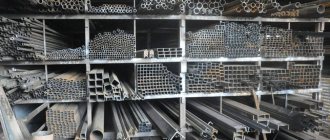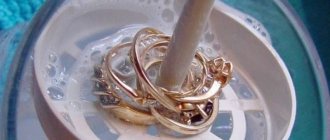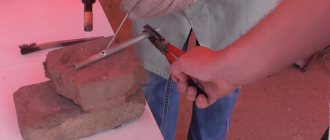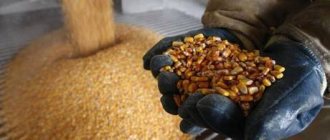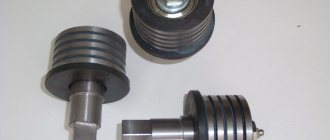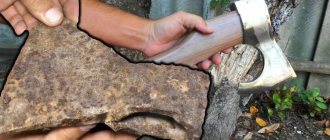Production Features
The process of making ethyl alcohol has some peculiarities. Indeed, depending on the selected raw material, such alcohol can be industrial or drinking. The production process is as follows:
- Initially, raw materials are prepared. It uses manure, oil, coal and other components of chemical production. The prepared raw materials are supplied to the corresponding distilleries.
- The factories use special technology. For example, oil undergoes a so-called hydrolysis process. And the gas formed after special processing soon turns into the necessary product.
- Then distilleries pack the resulting component into containers and send it to industrial enterprises, that is, to end consumers. Some of the modern distilleries or workshops, operating semi-legally or illegally, also use this product. It is added to various alcoholic drinks.
Drinking alcohol is used to produce strong drinks. Consequently, companies that produce alcohol care about both their own reputation and public health. They buy exclusively certified, high-quality products from distilleries.
Drinking alcohol is produced as follows:
- Initially, raw materials are prepared. For this purpose, potatoes, cereal grains, sugar cane or sugar beets or other natural ingredients are used, which are grown, collected, and then sent to the appropriate distilleries.
- To obtain high-quality products, specialized factories process grain using special technologies, add yeast to it and, through fermentation, obtain high-quality alcohol. To make it suitable for preparing alcoholic beverages, several degrees of purification are carried out, that is, rectification. In some cases, double distillation technology is used. This allows the product to become higher quality and cleaner.
- Then the products go to factories producing alcoholic beverages. There, additional purification of the alcohol is carried out and the product is saturated with all sorts of aromas. After this, alcoholic drinks are made.
Many modern manufacturers prefer cheap raw materials, because the production of ethyl alcohol from grain crops requires the use of special technology and various degrees of purification. This takes a lot of time.
Another factor is also important here. Given the high cost of raw materials, the final alcohol product cannot be cheap. The exception is if it is made of low-quality ethyl alcohol. Some manufacturers provide the opportunity to purchase inexpensive alcoholic drinks. But, as a rule, this is a sign that the product is made from cheap raw materials (for example, rotten potatoes).
Technological process of alcohol production
The production of ethyl alcohol consists of mandatory technological operations, which can be roughly combined into three stages: preliminary (washing, purification of raw materials, preparation of malt extract and microorganism cultures); main (boiling the raw material, saccharification - conversion of starch into sugar, fermentation, distillation of mash and collection of raw alcohol); the final stage is rectification purification.
When producing alcohol from grain, the raw material must have a high starch content and a moisture content of less than 17%. The preparatory stage of the technology consists of preliminary purification of raw materials from mechanical, organic and trash impurities. For this purpose, various technological equipment is used: air screens, magnetic separators, triers.
The boiling process consists of the fact that the raw material for the production of ethyl alcohol is treated with a vapor phase of a solution under a pressure of 0.5 MPa in order to soften the cellular structure, swell starch, extract and convert it into a soluble state to accelerate the saccharification stage with enzymes. At the same time, there is an increased increase in the volume of sugars due to the breakdown of starch.
Currently, starch-containing material is cooked using 3 methods: batch, semi-continuous and continuous. The most common is the last option using 2 schemes. According to the 1st operation, it takes place at a low temperature (about 140°C), but for a long time (1 hour). According to the 2nd – cooking temperature is about 170°C for 3 minutes. With this type of cooking, the raw material moves in a continuous mass through an evaporator to produce alcohol. In order to ensure uniform flow, the mass is crushed.
The next step in the food alcohol production technology is the cooling of the prepared medium and its saccharification as a result of interaction with malt solution or enzymes at 58°C. Traditionally, saccharification takes place in a continuous process using vacuum cooling. Cooling in a vacuum apparatus prevents thermal inactivation of catalyst-enzymes of saccharifying substances. Its principle is to reduce pressure, which causes a sharp cooling of the boiled mass due to the consumption of thermal energy for the evaporation of moisture.
The continuous type of saccharification is carried out using a 1- or 2-stream method. In the first case, the boiled mixture and saccharifying substances enter the saccharifier (a cylindrical unit with a cone-shaped base and a stirrer), which are kept for a quarter of an hour. With the 2-stream method, the boiled mass is divided into 2 equal streams and sent to saccharifiers. The 1st saccharifier contains 66% of the saccharifying substances, and the 2nd – half saccharified wort. They are cooled and sent for fermentation to the 1st and 2nd main units of the fermentation battery. At the exit, the wort has about 17% dry matter, including 15% fermentable sugars.
Fermentation processes in the wort occur due to the activation of yeast enzymes, while maltose breaks down into glucose and is fermented into the alcohol phase and carbon dioxide. During this process, there are 3 stages: fermentation, main fermentation and final fermentation. At the initial moment, activation of yeast activity is observed. The subsequent one is characterized by rapid fermentation of the sugar fraction and strong formation of carbon dioxide. At the final stage, residual fermentation of sugars occurs, which are formed during the additional sugaring of wort carbohydrates.
The fermentation process can be periodic, cyclic and continuous. Maximum efficiency is achieved when using the latter, which is carried out on equipment consisting of sequentially connected yeast, a fermenter and 10 fermentation units. Yeast and fermenter are used to prepare the required volume of industrial yeast. During the work, the yeast is filled with wort, it is pasteurized at 80°C for half an hour, then it is cooled to 30°C, the acidity is adjusted to a level of 3.6-3.8 pH with sulfuric acid and, finally, yeast is added from another yeast for seeding (30% of volume). The yeast multiplies to a wort dry matter level of 5%. After this, 3/4 of the volume of yeast goes into the fermenter, where the cooled wort is poured in parallel, the whole mass is acidified to standard acidity. The last quarter of the yeast is sent to another unit for propagation.
Other methods for making alcohol at home
https://youtube.com/watch?v=-fi7qxeG8KY%3Ffeature%3Doembed
There are different ways to make alcohol at home, using different ingredients:
- Sugar beet. It is best to remove the juice from the beets and ferment it, but you can go the other way. The beets are washed, then grated, malt is added to it, which can be used from the recipe described above, and hot water is added. The contents must be boiled until the beets become soft, then grind them through a sieve. The wort must be cooled to room temperature and the yeast must be added without removing the grounds. To create such a mash you will need 500 grams of malt, 5 liters of water and 10-15 kg of beets. Before obtaining alcohol, you need to squeeze out the grounds. The output is 1-1.5 liters of the finished product.
- Fruits and berries. Berries or other types of fruit can be used to create alcohol. They need to be crushed, then add 5% malt, counting from the total mass, and add water. Next, water is added and everything is thoroughly mixed. The contents should be boiled over low heat, then ground using a sieve and left to cool and ferment. When creating homemade alcohol, it is recommended to use unripe fruits and it is better that they are tart, since green fruits contain a lot of starch, which will turn into sugar only at the ripening stage .
- Bread. Alcohol can be obtained from bread mash; for this you need to put 10 loaves of black bread in 10 liters of warm water and leave everything to cook until the bread is completely dissolved. Next, the contents are cooled to 60 degrees and 3.5 kg of malt is added. The ingredients must be left for 3 hours, maintaining a constant temperature of 60 degrees. Next, the mash is cooled to room temperature and 350 grams of yeast is added to it. Everything needs to be left for a week to ferment, and after distillation you should get 2 liters of alcohol.
- You can use berries or other types of fruit to create alcohol
. Sugar. Sugar mash will allow you to get up to 4 liters of alcohol. To prepare it, you will need to use 30 liters of water, about 7 kg of sugar, and 500 grams of yeast. - Jam. If the jam has already been candied and no one wants to eat it, then alcohol can be made from it. To prepare you need 6 kg of base, 30 liters of water, and 200 grams of yeast. This amount of ingredients will yield approximately 3 liters of alcohol.
- Candies. If you have candies with filling, you can also make alcohol from them. To do this, you need to dilute 1 kg of sweets in 5 liters of water and add 40 grams of yeast. This amount can yield 500 ml of alcohol, which will have a delicate and unusual taste.
- Wild pears. It is from such fruits that the maximum amount of alcohol can be obtained. To do this, it will be enough to boil 2.5 buckets of pears, then add 1.5 kg of malt and 2.5 kg of water. The prepared contents must be supplemented with 2.5 kg of sugar, as well as 100 grams of yeast. The output from the resulting raw materials will be 3 liters of alcohol.
Using such simple recipes, you can make alcohol at home and the better the distillation apparatus, the larger, stronger and better the alcohol will be.
How to make alcohol at home?
First you need to understand how ethyl alcohol is produced. The production of alcohols occurs through the process of rectification. This is quite feasible at home if you follow our recommendations!
The first thing you need to know is that you can only make alcohol (at home, at least) from raw alcohol, that is, from distilled mash. From the original material - mash (alcohol is formed precisely during fermentation) - you will not get pure ethyl alcohol at home. You can learn how to get moonshine for making ethyl alcohol from our other article. Now you know what alcohol is made from!
Moonshine, as a rule, has an alcohol content of about 60-80% vol. It is preferable to dilute the raw material for alcohol to approximately 40-45% vol. Why is this done when making alcohol at home? The fact is that with such a strength of the product, a much better separation of the “heads” and “tails” is obtained, which, as with distillation, must be separated when rectifying moonshine at home.
So, we understand that the production of alcohol at home begins with the production of mash, and then with raw alcohol. Next, we proceed directly to the home rectification of alcohol. If you have already decided on a distillation column, then you should know what heating is considered effective for it. We would like to immediately note that in installations with a height of less than 1.5 m, large heating will be irrational. For example, in the case of the “Yerevan” device manufactured by Max Cuprum, the actual heating (without heat loss) should be about 350 kW, but taking into account heat loss, the heating power can be about 700 kW. Heat losses are calculated individually for each distillation unit.
The production of ethyl alcohol begins with the fact that you must pour raw alcohol into a distillation cube. Experienced moonshiners would also advise you to add one tsp for every 10 liters of raw moonshine. soda (baking soda). It is needed for saponification of esters, as well as neutralization of organic acids.
First, to make alcohol at home, you need to start heating the installation complete with filled moonshine. When the contents of the distillation cube reach a temperature of about 60 degrees, you should reduce the heating to the “working” temperature, which we indicated above. The product outlet will need to be shut off and the column “work for itself” for about half an hour (at least). It is important that for safety reasons you have an open atmospheric fitting (or have any other connection with the atmosphere, for example, in the case of “Yerevan” - this is an unsealed removable cover). If raw alcohol begins to ooze from the place of connection with the atmosphere, you need to reduce the heating, because You are faced with a common phenomenon - choking.
It is important that in order to obtain high-quality alcohol, the temperature of the product must be quite high (considerably above room temperature). This is explained by the fact that the temperature difference between the steam entering the column and the reflux must be minimal for an effective heat and mass transfer process.
To produce food alcohol after the installation has “worked for itself”, it is necessary to establish an effective sampling rate. In the case of “Yerevan” it is 350 ml/hour. But it is important to take into account that the “heads” for producing alcohol from food raw materials should be selected as slowly as possible, at a rate of about 30-40 ml/h. They will amount to about 2% of the raw alcohol you poured into the distillation cube and contain impurities that significantly worsen the quality of the product. Therefore, if you are wondering how to quickly make alcohol, we have to disappoint you: no way.
Let's return to the question - how to make good alcohol at home! After selecting the “heads” (which, by the way, smell like acetone, and their strength, if you do everything correctly, should be about 94-95% vol.), the selection of the next, intermediate fraction, circulating alcohol, will begin. As a rule, it makes up 10-30% of the distilled raw alcohol and is not an “alpha” alcohol, which is exactly what we want to make alcohol at home.
The amount of circulating alcohol is determined using the Lang test: add 200 mg of potassium permanganate to 1 liter of water, mix and leave for 2 days. After this time, the test solution is considered ready! Take 50 ml of rectified product, add 1 ml of solution and note the time. Then you need to take the same amount of water and add the same amount of solution - this will be a sample for comparing the rate of acquisition of the same color by rectified alcohol. If raw alcohol acquires this color in less than 10-20 minutes (everyone has different requirements for alcohol), then it is recycled alcohol. If it is more than this time, then this is the food fraction.
So, if you are thinking about how to prepare alcohol at home, know that you will definitely need to do the Lang test.
The food fraction, like the tail fraction, in our case should be taken at a rate of about 350 ml/h. It usually ends when the boiling point reaches 85 degrees. (but it may end a little earlier, for example, at 82 g, if the organoleptic properties of the rectified product are no longer satisfactory). Rectification, as a rule, continues until the bottom temperature reaches 98 degrees. Then the heating is turned off.
Both circulating alcohol and the tail fraction will be useful to you for subsequent rectifications, because they contain a large amount of ethyl alcohol. How to obtain ethyl alcohol from these fractions is the same as we described above.
Now you know how to make 96° alcohol!
Selection of raw materials and sources of their supply
Another, no less important, smoothly follows from the previous question - the choice of the types of raw materials used for production and the sources of their production.
The production of alcohol by distilling mash can be carried out using a variety of raw materials. First of all, it is sugar. Its productivity is maximum: 10 kg of such raw materials gives approximately 5-5.5 kg of the finished product, that is, pure alcohol.
However, it is also the most expensive. In addition to sugar, you can use various starch-containing products: grains (rice, corn), as well as sugar beets and fruits (apples, grapes, plums, etc.). It is also possible to produce alcohol from potatoes. From wheat you can get up to 3 liters of alcohol, and from beets/potatoes and fruits only about a liter.
In any case, the choice is quite large. In addition, you can use several different sources at once, as well as mix brews obtained from different components. This is unimportant if you produce technical alcohol. But in the production of drinking alcohol, and especially of high quality (extra and higher categories), such mixing is unacceptable. The raw materials must be of high quality (and not rotten or frozen fruits, beets, etc.) and single-component.
Characteristics of raw materials and products
To produce ethyl alcohol, starch-containing raw materials are used - various types of grain (wheat, rye, barley, oats) and potatoes. Grain moisture content is classified into dry (13.5...14.0%), medium dry (13.5...16%), wet (15...18%), raw (over 18%). Based on the content of weed impurities, commercial grain is divided into pure (up to 1...2%), medium purity (2...4%), and weedy (over 4%).
Potatoes most fully meet the technological requirements of alcohol production, as they quickly boil, form a fairly mobile mass containing the necessary amounts of nitrogenous substances to feed the yeast, and give the highest yield of alcohol. The amount of water in potatoes ranges from 64 to 86%, starch - 8...30%, depending on the variety, size of the tubers, and their degree of maturity. To produce alcohol, potatoes must be whole, dry, disease-free, unsprouted, uniform or heterogeneous in color by the appearance of the tubers. Potatoes can be of any shape and size, with a maximum transverse diameter of at least 30 mm.
In alcohol production, drinking and technical water is used. According to the bacteriological indicator, water supplied to the water supply network must meet the following standards: the total number of bacteria in 1 ml of undiluted water is no more than 100, coli index is no more than 3, coli titer is no more than 300. Depending on the object of application to water has different requirements, for example, to prepare the batch before boiling, process water with a temperature of no more than 50 ° C, pH = 4.5...5.5, and a hardness of no higher than 12 mEq/l is used. The presence of salts of heavy metals (mercury, lead, barium, etc.), as well as salts of nitrous acid, is not allowed in it.
Enzyme preparations of microbiological origin in the form of surface and deep cultures, as well as concentrated preparations, are used as saccharifying materials in alcohol production.
The alcohol produced from grain and potato raw materials has a specific odor due to the presence in it of a relatively small amount of various impurities: carboxylic acids, esters, aldehydes, fusel oil components and other compounds. The melting point is (freezing) -114.6 °C, boiling point (at 101.08 kPa) - 78.4 °C, flash point - 130 °C.
In the alcohol production, raw alcohol, grade I rectified ethyl alcohol, highly purified rectified ethyl alcohol and “Extra” rectified ethyl alcohol are produced from grain and potatoes. All types of quality grain (wheat, rye, barley, etc.) are used for the production of rectified ethyl alcohol “Extra”, and in some cases, for example, when producing “Russkaya” vodka, up to 35% of healthy potatoes.
How to check the quality of alcohol at home
Once you have alcohol at home, you can test it for impurities by performing a Lang test.
Needed:
- 3 fractions of one alcohol - heads, body and tails;
- 3 flasks (clean jars will also do);
- a strong solution of potassium permanganate (per 50 ml of distilled water - 0.1 g of potassium permanganate);
- graduated pipette (syringe).
This is done like this:
- Add 0.4 ml of potassium permanganate to each of the three jars and add 20 ml of alcohol fractions: heads into the first jar, bodies into the second, tail fractions into the third.
- Literally within a minute, reactions occur: the heads become light yellow, the body remains pink, the tails remain brown.
- Immediately after breeding, time is noted and after what time the sample with the “body” acquires the color of salmon:
- 10 minutes – first grade alcohol, not very high quality;
- 15 minutes – premium;
- 20 – “Basis”;
- 22 – “Lux”.
If the alcohol has acquired the color of salmon earlier than 10 minutes, consuming it internally is dangerous to health.
The easiest way is to drop it on your hand and rub it. An unpleasant, pungent odor indicates that the alcohol is unsuitable for internal consumption.
Cognac made from alcohol at home recipes.
Since cognac is not a particularly cheap drink and is not always affordable for the average person, cognac can be made from home-made moonshine or high-quality alcohol. Recipes for home-made cognac are not that complicated and will not take you very much time. The result will be a fairly pleasant taste and aroma of a good drink.
It will not only be pleasant to drink it yourself, but also show it off to friends, put it on the table for the holiday, and help significantly save the family budget. Well, let's get down to business.
The first option will be a recipe for ladies' cognac.
From the raw materials, we will need about 3 liters of alcohol or moonshine diluted to 40 degrees. 1 medium-sized lemon along with the peel needs to be finely chopped. At the pharmacy you can buy oak bark crushed into dust, here we will need 1 tablespoon. On the tip, a teaspoon of soluble coffee. And we will also squeeze about half a teaspoon of sugar.
We do everything like this.
As I already said, you need to cut the lemon very finely right along with the peel, it is advisable not to lose a single gram of juice. Next, pour the lemon with alcohol, put it in the refrigerator and keep it for about 3 days. Then remove it from the refrigerator, strain it carefully, immediately add all the other ingredients and mix thoroughly , close the lid and place in a dark, cool place for a week. After 7 days, remove, pour three or four times from one container to another and leave to brew in the same place for 3 days. After 3 days, the resulting mixture must be filtered, bottled and can be consumed. What you get will have an amazing aroma, excellent taste and, accordingly, a fairly invigorating effect.
The second option I will tell you about the recipe for homemade cognac.
From the components we will take the following:
Still the same 3 liters of moonshine or alcohol diluted to 40 degrees, small deviations of 41-42% are possible. For lovers of walnuts, it will not be a big problem to find partitions from about 20 pieces of nuts. Take another teaspoon of sugar. A teaspoon of tea with an elephant as before , or an analogue of a naturally premium grade. A couple of black peppercorns. Two cloves. Just a little vanillin on the tip of a knife, if not, it’s no problem we can do without it. Chopped lemon or orange zest, from one lemon or orange.
How to cook.
Take a container of about 5 liters, pour alcohol or moonshine into it, first add sugar and mix it thoroughly so that it is completely diluted, then add all the other ingredients, mix thoroughly and leave for about 10 days in a cool, dark place. After 10-12 days, the resulting The mixture is bottled and can be consumed.
In this recipe, you can replace tea with ground natural coffee.
The next recipe will be spicy cognac.
We will need the following raw materials.
3 liters of alcohol or highly purified moonshine diluted to 40 degrees.
1 tablespoon of premium large-leaf black tea. 5 bay leaves, 6.2.5-3 tablespoons of sugar. Half a pod of red hot pepper, you can even dry it. A pinch of vanillin to soften.
We do this:
All components are thoroughly mixed in a container of suitable size, covered with a lid and kept for 14 days in a cool, dark place. Afterwards, the resulting drink is filtered and can be consumed.
This option with hot pepper is well suited for the prevention of colds, I think it will warm you up in the cold winter, both inside and outside.
Dear readers, any of the recipes is good in its own way, but it can bring you pleasure and serve you well only if you do not abuse these drinks.
Remember that alcohol and drinks containing it are primarily created for pleasure, and not for banal drunkenness.
Be healthy and all the best to you!
Making alcohol without sugar
https://youtube.com/watch?v=UKjogw5Cygo%3Ffeature%3Doembed
Get malt. It is obtained from grains of rye, barley or wheat. How? By germination in trays (their height is from five to ten centimeters). Treat the grains with potassium permanganate. Pour into trays (three centimeters) and irrigate them with water. Do this so that the grains float in the water. Cover the patches with film. Place in a place that is well lit. Irrigate the grains periodically as they absorb water. The malt will be ready in seven days. Peel the potatoes (one kilogram), chop them not very finely and boil for two hours. When the potatoes turn into a paste, leave it to cool.
The temperature should drop to sixty degrees. Add malt (crushed) to it. Leave to cool to twenty-two degrees. Now - adding yeast. With the yeast, place the mixture in a warm place.
At a temperature of twenty to twenty-two, the mash will be considered cooked in three days. If the temperature is fifteen degrees – in a week. Distill the mash through a special distillation apparatus. You can adjust its strength yourself during the distillation process. If you see that the alcohol turns out to be cloudy, then lighten it by adding potassium permanganate.
How to do it? Pour a small amount of it into alcohol. Stir. Leave to infuse for twenty-four hours. In the morning, carry out the process of filtering out the sediment. You, as you understand, don’t need it.
And now we will also deal with the unpleasant smell. Coal (wood) will help us in the showdown. Pour it into a container with alcohol and stir. Let it brew for fifteen days. During infusion, the charcoal sometimes needs to be shaken. After fifteen days, add a mixture of coal and alcohol and filter it.
Malt for making alcohol
Cereal grains must be sprouted in a small and shallow container. Grains should be scattered at the bottom, but not more than 3 cm; before this, the grain will need to be moistened in a manganese-potassium mixture. Next, the prepared grain is moistened with water and left on the sunny side. It is recommended to cover the grain container itself with glass or film. As water is absorbed, it should be added to the dishes, and also ensure that the cereals are constantly in the water.
After the first shoots appear and are 3 cm long, you can proceed to the next step. This length of sprouts indicates that the malt is ready. To obtain this length, it takes about a week, perhaps a little longer.
How to distinguish drinking ethanol from technical ethanol
Unfortunately, the high price of a bottle of vodka does not guarantee its quality. Alcohol is easy to counterfeit, just get similar labels and containers, and “elite” sawdust booze (at best) is ready. Stores also do not hesitate to buy cheaper goods, so the risk of poisoning is not excluded, even if we buy alcohol in beautiful “rich” packaging.
Our readers recommend! To quickly and reliably get rid of alcoholism, our readers advise. This is a natural remedy that blocks cravings for alcohol, causing a persistent aversion to alcohol. In addition, Alcobarrier triggers restoration processes in organs that alcohol has begun to destroy. The product has no contraindications, the effectiveness and safety of the drug has been proven by clinical studies at the Research Institute of Narcology.
To reduce this risk, it is better to make such purchases in hypermarkets, chain stores or specialized stores. In a word, this should be a point of sale that values its reputation, and to which, if anything happens, you can make a claim (most importantly, keep your receipts). You should avoid stalls, market tents, and dubious private outlets. Such sales points like to disguise themselves as “confiscated goods,” thus explaining the low price of such a “good product.”
The purchased alcoholic drink should be set on fire before drinking. Just pour a little product into a tablespoon and light it. If it burns with a translucent blue flame, we have ethanol (although what it is made of remains unknown). If the flame gives off a greenish tint, it is poisonous industrial alcohol.
If you want to check the quality of your favorite brand of vodka or the one you just bought, a potato wedge will help. Place a piece of peeled potato into a glass of alcohol and leave it for a couple of hours. If the root vegetable has not changed its color, the drink is based on good food grade ethanol. The pink tint of potatoes indicates a high methanol content.
You can also check alcohol for foreign impurities using copper wire. It must be heated over a fire and lowered into a container with the product being tested, but no unpleasant odor or vapors should be released. If the liquid gives off a strong odor, you should not drink it.
The best prevention against industrial alcohol poisoning is to avoid heavy alcohol altogether. It is quite difficult to talk about the quality of ethanol, even drinking ethanol, since it is also poisonous to the body. GOST of 1972 defined ethanol as “a potent drug that first causes excitement and then paralysis of the nervous system.” Today, Russian GOST defines it as “a colorless liquid with a characteristic odor.” Despite the fact that the standards for its production have not changed. We should not forget that the alcohol industry has brought and continues to generate income for the state treasury. And the treasury is interested in the sale of alcohol, and not in the health of the nation. Ethyl alcohol was poison in 1972 and is poison today.
Sedimentation of diluted alcohol
First, try to fill the container in which the alcohol will be stored to the very neck. If alcohol interacts with oxygen, it will oxidize and form acetic acid. Dilute alcohol can be used after a couple of days, or better yet, after a week - during this time all chemical reactions should stop. The optimal settling temperature is +40 C and above; the container should be stored in a dark place.
After settling the alcohol, you can safely pour the ingredients of the tinctures with it, and then, if strong raw materials were used, dilute it to the required degrees, guided by the table above.
Now you know how to dilute alcohol with water at home, which means it has become even easier to prepare tinctures and other homemade alcohol. Subscribe to the Rum Diary - this is just a fraction of the useful information that we want to convey to you. Good luck!
- https://therumdiary.ru/napitki/samogon/kak-pravilno-razvesti-spirt-vodoj-pryamo-u-sebya-na-kuxne.html
- https://drinkinhome.ru/raznye/kak-sdelat-spirt-v-domashnih-usloviyah/
- https://sunhi.ru/domashnee-proizvodstvo-spirta-prigotovlenie-spirta-v-domashnih-usloviyah/
- https://catarank.ru/v-domashnih-usloviyah/kak-sdelat-spirt-v-domashnih-usloviyah/
- https://catarank.ru/v-domashnih-usloviyah/kak-sdelat-spirt-v-domashnih-usloviyah/
Homemade preparations: how to make your own alcohol
From the author: Not long ago I posted a couple of photos of alcohol I made at home. Judging by the comments, this topic is interesting to people. In this post I will try to describe in detail the process of preparing alcohol.
First we need to make a mash from which we will remove the alcohol. I used a classic mash recipe made from sugar and yeast. The utensils were three twenty-liter glass bottles with stoppers adapted for a hydraulic lock.
Yeast: 100 grams per bottle
Sugar - 4 kilograms each serving
Spring water - 13 liters each
Heat the water to room temperature, stir granulated sugar in it and then pour it into the bottle.
Yeast is diluted in warm water and added last
After all the components are poured into the bottle, you need to cut off the access to air. To be sure, I wrapped the plugs with tape.
The bottles are placed in a warm place for 10-14 days
After two weeks of waiting, when the mash has stopped “gurgling” in the hydraulic locks and has become lighter in color, you can begin distillation.
Assembling the device
My cube is 20 liters, which makes one bottle for one portion of distillation.
Pour the finished mash into the cube.
This is what the device looks like on the stove.
This is a general view with hoses.
During primary distillation, a refrigerator on the column is not used, water is not supplied to it; for this, the Hoffmann clamp is completely tightened.
During the distillation of mash, impurities are constantly “generated” directly in the cube when heated. The fact is that yeast, which are essentially microorganisms, before being boiled alive, release unnecessary impurities into the boiling mash, including fusel oils. Therefore, the first distillation must be carried out at maximum heat and productivity, so that the yeast will die quickly and release as few undesirable substances as possible. For the same reason, a second distillation with separation into fractions is highly recommended. Raw alcohol at maximum distillation speed produces a low strength.
As a result, from all the mash I got three 3-liter jars of 60% and two jars of 35% raw alcohol, each distillation took about three hours.
Now you can proceed to the second distillation - fractional. Instead of mash, raw alcohol is poured into the cube, previously diluted to a strength of 20-40%. A little trick I learned from the Internet: if you add 3 teaspoons of baking soda to the raw alcohol, the alcohol will be much “softer”.
After heating the column to 75 degrees, tap water is supplied to the rising cooler.
To do this, the Hoffmann clamp is rearranged.
20 minutes the steam is completely condensed on the rising refrigerator - self-operating mode.
After this, we move the clamp back onto the water supply tube into the rising refrigerator and begin to close it slowly, with pauses after each half-turn, until drops of the head fraction appear at the outlet. From this moment, the selection of the first fraction of “heads” begins. After selecting 150 ml for a 20-liter cube, you can begin to select the “food” fraction. Temperatures will stabilize around 78-82 degrees.
Here is the result!
Close-up
The lower the temperature of the cube, the lower the performance of the system, the higher the strength of the product. During the distillation process, the temperature in the cube increases. The “food” fraction is selected to a temperature of 87 degrees cubed. Once it is no longer possible to keep the temperature below 87 degrees, you need to change the receiving container and collect the “tail” fraction. The second distillation is much slower than the first; it took me about 12 hours, and I only used half of the resulting raw alcohol. This is what happened.
It is believed that making alcohol at home is much cheaper. Now you can roughly calculate the costs, taking into account not only sugar and yeast, but also gas, water for cooling, gasoline to bring spring water, and other components. But the most important thing is the time it takes to get a decent product. After all, this is only alcohol, and it will take a lot of time to make delicious drinks from it. But for myself, I came to the decision that a home-made drink is much tastier and safer.
Types of drinking alcohols
To understand what drinking alcohols are made from, it is advisable to consider the types of alcoholic products that exist today. All of them differ in strength, taste, and price. According to the current classification, drinking alcohols are divided into grain and grape alcohols, made from berries and fruits, sugar cane, agave, and also flavored.
Grain products include whiskey and vodka. Such drinks are considered the highest quality and natural. This is due to the presence of grain raw materials taken as a basis. Products manufactured under the luxury, alpha and super brands are made exclusively from grain. Highly purified alcohols are made from black molasses.
Grape varieties are used for the production of Armagnac, cognac, and French brandy. If the bottle says that it contains “Extra” alcohol, then the drink is not real.
Fruit varieties are made from berries and fruits. Their production technology is specific. For example, pears and apples are not pressed. They contain hydrocyanic acid. It should not get into alcoholic drinks. Berries such as raspberries and strawberries are pre-soaked in alcohol, after which the finished product is obtained. Brandy is obtained from fruit alcohols. As a rule, this drink is produced in Italy, France, and Spain.
In the process of processing sugar cane, sugar is obtained, from the waste of which black molasses is made. It is further processed to produce cachaça and rum.
To obtain the required product directly from black molasses, special yeast is added to it. Rum is different from cachaça because it infuses longer. Cachaça does not require aging. It goes on sale almost immediately.
Flavored types are used to make absinthe and similar drinks. For this, ethyl must undergo special processing. Natural raw materials such as wormwood are added to it. Then re-distillation is carried out, and absinthe is obtained from the finished product.
The last type is alcohol made from agave. Tequila is made from it. Such a drink should always contain a natural product. The manufacturer indicates all the details directly on the product label.
It should be understood that mixing alcoholic beverages made from different raw materials is unacceptable. After all, according to experts, it will be difficult for the body to process various alcohols. This can lead to a severe hangover. However, some alcohols harmonize perfectly with each other. When mixing them, a person does not expect a morning hangover.
Alcoholic drinks contain ethyl. Therefore, the effect on the body is always the same. This does not depend on how strong the alcohol is. To avoid hangover syndrome and various complications, it is advisable to consume alcoholic products made from high-quality ingredients that have been fully certified in accordance with state standards. A good strong drink cannot be cheap, and technical and medical alcohol must be used exclusively for their intended purpose.
Rectified drinking alcohol at home
From a chemical point of view, drinking ethyl alcohol is a colorless liquid, completely transparent with a sharp characteristic odor and a burning taste. Easily dissolves in water. When set on fire, it burns with a blue flame. The chemical formula of drinking alcohol is C2H5OH. Boils at - 78.3 degrees.
Attention: Solutions with a high alcohol content are flammable and require careful handling, as well as compliance with fire safety regulations. You can make ethyl alcohol yourself. Making alcohol at home is a very real task
Having special equipment for the production of alcohol, you can easily obtain a product of fairly high quality, in no way inferior to alcohol made in production
Making alcohol at home is a very real task. Having special equipment for the production of alcohol, you can easily obtain a product of fairly high quality, in no way inferior to alcohol made in production
You can make ethyl alcohol yourself. Making alcohol at home is a very real task. Having special equipment for the production of alcohol, you can easily obtain a product of fairly high quality, in no way inferior to alcohol made in production.
Raw materials for alcohol. The main raw materials for the production of ethyl alcohol at factories are: grain, potatoes, sugar beets. At home, alcohol can be made from any product that contains sugar or starch. Wheat, corn, barley, sugar, jam, berries, fruits, the list is simply huge. The choice should be determined by the cost of raw materials and the yield of the finished product. The most common and easiest to prepare is, of course, sugar, and the cheapest raw materials include grains, beets, and potatoes.
Elite varieties of alcohol, as a rule, are produced on the basis of alcohol prepared from grain and fruit-berry raw materials. Below is how to make alcohol from wheat. Based on this recipe, you can similarly prepare alcohol from other available raw materials, the technology is almost the same.
Determining the quality of a drink
The color level of the alcohol is determined using a regular glass: the presence of a whitish tint indicates poor purification and the presence of fusel oils. If the mash boiled too actively, the drink will have a cloudy color. Fusel oils can be removed by additional purification and distillation. To check the smell and taste, a little alcohol is poured into a bottle and diluted with cold water (1 to 3). Stir and taste.
Strong alcohol at home is stored in a closed bottle in the refrigerator. The shelf life of alcohol is no more than 5 years. Based on it, various tinctures of berries, roots, herbs, fruits and flowers, jams, fruits and root vegetables are made. It is also used to prepare such noble drinks as cognac, whiskey, absinthe, liqueurs, and gin. Many medical tinctures for hypertension, colds, indigestion and other diseases are also made based on it.
https://youtube.com/watch?v=-fi7qxeG8KY%3Ffeature%3Doembed
Purification of drinking alcohol
Rectification allows you to obtain high-quality alcohol that does not contain harmful impurities and oils. The process consists of chemical purification with substances that neutralize impurities, separating them through repeated evaporation and condensation of vapors. The drink is divided into several fractions, and the alcohol concentration increases. The process is carried out in a distillation apparatus.
They begin with the first purification - saponification of fusel oils. If there is a lot of acid in alcohol, it must be neutralized with baking soda or alkali. Then prepare a solution of potassium permanganate: per liter of alcohol, 2 g of manganese dissolved in 50 ml of distilled water. Mix everything and leave for 20 minutes. After the allotted time, add a soda solution prepared at the same percentages and clarify for 10-12 hours.
https://youtube.com/watch?v=0-Ck8l_FmwM%3Ffeature%3Doembed
As a result, the level of contamination of fusel oils is reduced by 95-97%.
The purified alcohol is filtered through a thick cloth. Start fractional distillation. It is carried out in a distillation cube with a drop catcher. Crude alcohol is diluted with soft water to a maximum strength of 51° and poured into a moonshine still. The temperature is quickly brought to 60°C, then the heating intensity is gradually reduced and brought to a boil (82-84°C). The resulting alcohol is purified with charcoal. Pour crushed linden or birch charcoal into a glass or ceramic container at the rate of 50 g per liter of drink. Alcohol is poured. Mix everything thoroughly and leave for 20-22 days. After the allotted time, the alcohol is filtered daily through cheesecloth for another 14 days.
Ethyl alcohol and its use in medicine
The described drug has antiseptic, disinfectant and tanning properties (depending on the concentration). Alcohol 95% is used when treating the hands of surgical personnel as a tanning agent. Closes skin pores. Alcohol 70% has excellent antiseptic properties. It is used, for example, to treat injection sites.
Alcohol 40% can serve as a warming agent for inflammatory diseases. For example, for applying a compress for otitis media, tonsillitis, arthritis, etc. Alcohol 35% cools the skin, expanding pores and helping to increase heat transfer, so it is excellent as a rubbing agent for fever.
Pure alcohol is added to the Bobrov apparatus for pulmonary edema and serves as an antifoam in the event of this emergency.
Ethyl alcohol is a volatile, flammable and transparent liquid with a characteristic odor and scalding taste. It is a representative of monohydric alcohols. Produced by fermentation or hydration of ethylene.
Choosing a room
As for the premises, its choice must be approached with all responsibility. Let's look at the main parameters that it must meet. We hope you are not planning to produce alcohol at home? This option is quite acceptable if you make it for personal needs, but we are going to do business. But here everything is already serious, and the appropriate premises are required to organize a fully functioning workshop in it.
Criteria for choosing production areas:
- Dimensions - your workshop should be two or even three times larger than the area occupied by all the equipment for the production of alcohol (in particular, fermentation tanks). The same applies to ceiling heights.
- Temperature – the room where production is planned should be warm enough. That is, there are two options - a well-organized heating system or good thermal insulation. This is essential to maintain fermentation processes on a continuous basis.
- Ventilation is also a very important point. It can be either forced or natural (only if a water seal is used).
- A separate room must be intended for the installation of distillation equipment (distillation part).
- Other important parameters. The workshop itself must have a sewerage system, floors with equipped drains, and also running water.
As you can see, it is important to take into account various nuances before deciding whether the premises are suitable for organizing a distillery in it. Keep in mind that the larger production volumes you plan, the larger the dimensions of the equipment (as well as its quantity), and the larger the area required for the workshop or plant
How to make malt and malted milk
Begin preparation by sifting and washing the raw materials. This is needed to remove debris, empty and chipped grains, and dust. After cleaning and sorting the grain, the wheat is soaked in a wooden or ceramic container for 6-8 hours. When the first sprouts hatch, the grains are washed in running water and transferred to a flat surface (this can be a bowl with low sides, a baking sheet, or a baking board). After soaking, the seeds are germinated in a well-ventilated area at a temperature not exceeding +20°C. To prevent drying out, the raw materials are covered with a damp cloth or gauze. Stir every 4-6 hours.
When the first roots appear, the seeds are placed in a glass bottle. The layer of grains should be from 15 to 25 cm.
The room temperature is increased by 2-4°. This is necessary for the activation of grain and the active accumulation of malt enzymes. Malt is ready for use when the length of the sprouts has reached 13-15 mm.
Green malt is used to make milk: for pure wheat malted milk, only wheat is used. But many winemakers recommend a mixture of 2 parts of sprouted wheat and 1 part of sprouted barley and oats (grain is sprouted in the same way). The mixture is washed three times, then poured into a bottle, filled with hot water and left for 8-10 hours.
From wheat you need to grind 2 kg of flour, add about 200 grams of malt mixture and add a liter of water. Mix well. The resulting malted milk is necessary for saccharification of starch raw materials in the main mash during the preparation of alcohol.




